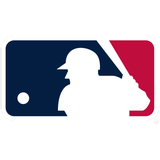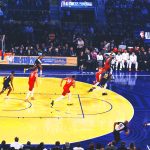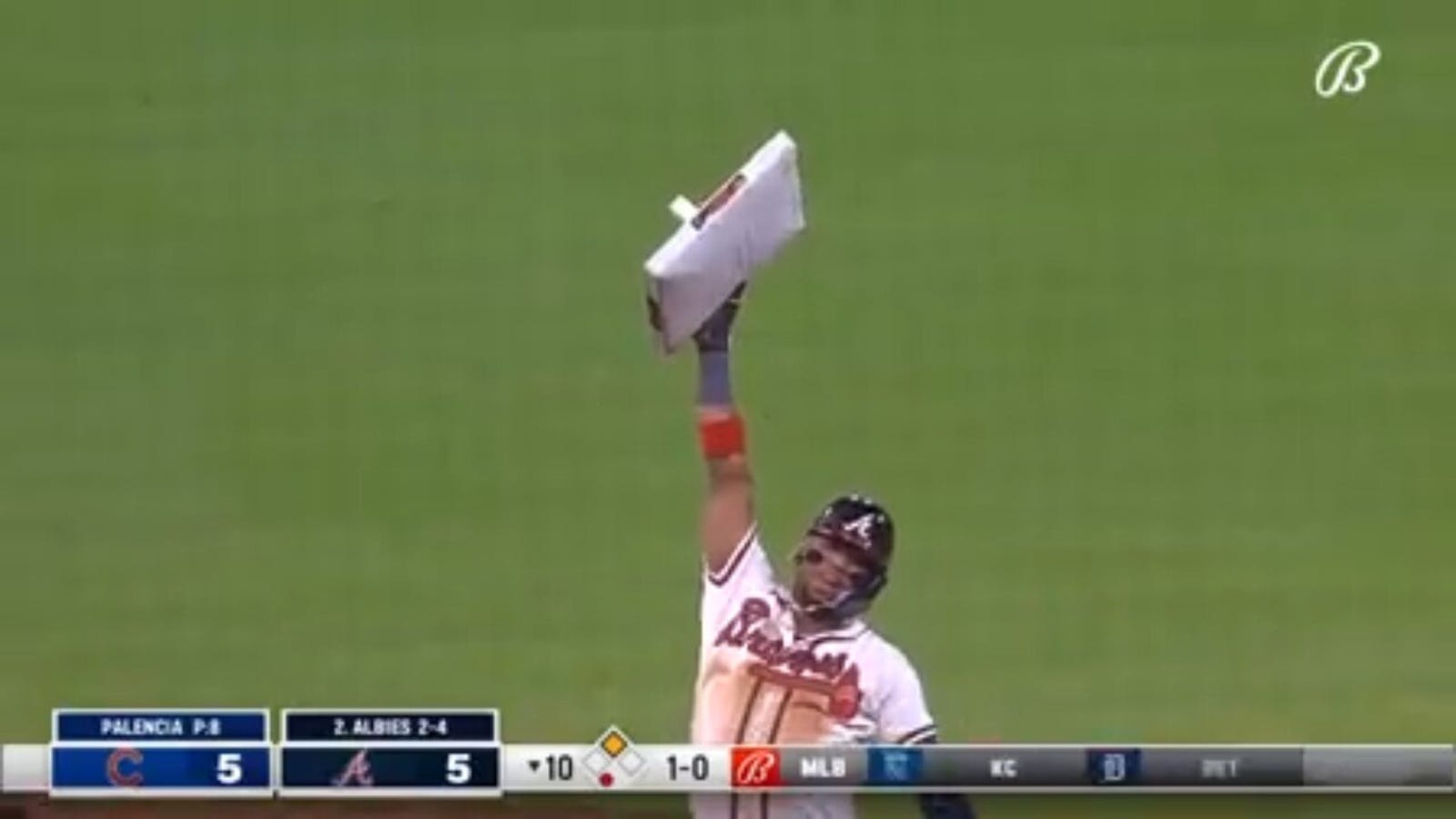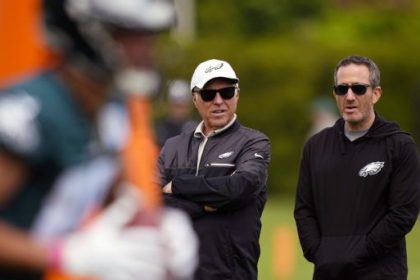Every Thursday this season, I’ve examined one thing we learned in each division over the previous week. With the regular season coming to a close — and before we switch our baseball brains to postseason mode — now’s a good time to expand this exercise to the bigger picture.
In a year with the most significant rule changes implemented in decades, what did we learn about baseball in 2023? How have the new regulations and restrictions changed the game we know and love? And what do the standings tell us about what to expect in years to come?
Let’s dive in.
The pitch clock works
ADVERTISEMENT
The sport long revered for not having a clock? It has a clock now. And it has, as expected, made baseball games a lot shorter. The average time of a nine-inning game in 2023 — two hours and 39 minutes — is not only down considerably from the 3:03 mark from a year ago (and the record-high 3:10 from 2021), it’s the lowest since 1985.
MLB PR presented a comparison earlier this week of how few nine-inning games this season have surpassed three hours and 30 minutes relative to recent years, and indeed, the contrast is stark:
- 2021: 390 (all-time record)
- 2022: 231
- 2023: 9
Add another half-hour, and you’ll find that four-hour nine-inning games — of which there were 19 a year ago and a record-high 39 in 2021 — are essentially dead. There has not been a single four-hour nine-inning game this season, and if that holds, it would be the first time since 2004 that there wasn’t a single such game played during the regular season.
Shorten the measure to three hours and the difference becomes even more stunning. Through Tuesday, there were 281 nine-inning games that lasted over three hours this season, down dramatically from a record high set in 2021 of 1,404 such games. The last season there were fewer than 300 three-hour nine-inning games was 1985.
To me, though, the overall time saved means less than the improved flow of an average game. Better pace of play was always the priority rather than shorter games, and that has undeniably been achieved. Gone are all the unnecessary delays by both pitchers and batters over the course of a plate appearance, allowing the flow of each inning to be dictated by the action unfolding on the field rather than subtle habits that do nothing to advance the sport we all want to actually watch happen.
Most impressively, the players adapted to the clock shockingly quickly over the course of the season, leaving just a handful of violations occurring across the league on any given night and the clock largely fading into the background more than becoming a main character as the season progressed.
I’m still curious to see if the clock negatively impacts the traditional late-inning tension of October games, but strictly from a regular-season standpoint, it’s difficult not to call the clock a smash hit.
Steals are back, baby
By making the bases bigger and limiting the number of times a pitcher can “disengage” from the mound to hold runners on, MLB sought to revitalize the running game that had slowly evaporated over the past decade. Stolen base attempts — successful or not — are one of the more exciting moments in any game, and these rules intended to restore the frequency with which those plays occurred in a league that was increasingly prioritizing walks and homers in run production efforts more than advancing runners via stolen bases.
Mission accomplished — well, mostly.
Ronald Acuna Jr.‘s successful quest for 40 homers and 40 steals — and his historic achievement of 70 steals, a mark we haven’t seen since Jacoby Ellsbury in 2009 — has rightfully received ample attention as the poster child of this glorious new steal-happy era. Beyond Acuna’s historic campaign, a near-record number of players (17) have reached 20 homers and 20 steals this season, further emphasizing the power-speed possibilities that the new rules boldly encourage.
In the minors, two special speedsters — Chandler Simpson with Tampa Bay and Victor Scott with St. Louis — made a legitimate push at 100 steals That hasn’t ben accomplished since Billy Hamilton and Delino DeShields Jr. in 2012.
But another steal-related nugget has largely gone under the radar this season: Trea Turner has stolen 29 bases this year without being caught once. If the season ended today, it would be an MLB record for most swipes in a single season without being caught, besting the previous record set by Chase Utley (23 in 2009).
Stretching back to last year, Turner has stolen 34 consecutive bases without being caught — and 35 if you count his successful swipe in last year’s National League Division Series versus the Padres. A stretch of 35-plus consecutive successful steals has only been done 13 times by 10 different players, with Vince Coleman’s 50 straight from 1988 to 1989 representing the record.
That Turner didn’t best his career high of 43 steals back in 2018 is a bit surprising, but the flawless efficiency is tough to complain about. It’s also an important illustration of how we aren’t seeing more steals compared to peak seasons, we’re just seeing a higher conversion rate than ever before.
Through Tuesday’s games, we’ve seen an average of 1.44 successful steals per game, up considerably from 1.02 a year ago. However, that mark is the highest since 1996 yet pales in comparison to the 1.70 gold standard from the track meet days of 1987. Stolen base attempts per game (1.79) are the highest we’ve seen since 2012 (1.80), but not close to the 2.42 attempts per game we were seeing in the late ’80s.
The biggest historical difference, though, is the stolen base success rate. It’s been steadily climbing almost annually for the past three decades but has entered a new stratosphere. After already reaching an all-time high 75% success rate over the past three seasons, MLB baserunners have registered a whopping 80.2% success rate in 2023. For reference, Rickey Henderson recorded an 80.7% success rate over the course of his career.
If the new rules have made stealing bases nearly as easy as Rickey made it look — at least statistically — I’d bet teams will only get more aggressive with their overall attempts moving forward, at least until defenses figure out a way to fight back.
Effects of the shift ban
It was tough to dispute that the game had slowed — and lengthened — to an arguably untenable degree in recent years, prompting the institution of the pitch clock. I wasn’t especially convinced that the infield shifts had become a legitimate issue plaguing the league to the same degree, but one thing had become clear in recent years: Teams really liked to shift. And it happened really quickly.
The shift might not have been a 21st century innovation entirely — Ted Williams was shifted against, haven’t you heard? — but the extreme frequency with which it was deployed over the past half-decade had become too much for MLB to ignore. With a shift being defined as three infielders positioned on either side of second base, consider how quickly shifts became popular in recent years:
Year: % total PA with shifts/% PA with shifts vs. RHH/% PA with shifts vs. LHH
- 2016: 13.7%/6.2%/24.3%
- 2017: 12.1%/5.2%/22.2%
- 2018: 17.4%/8.9%/29.6%
- 2019: 25.6%/14.3%/41.9%
- 2020: 34.1%/21.7%/50.8%
- 2021: 30.9%16.2%/52.5%
- 2022: 34.1%/20.1%/55.6%
- 2023: INFIELDERS, STAY WHERE YOU ARE!
Over the course of just six years, total shifts nearly tripled. That was not a trend the league was comfortable with.
Now that it’s gone, there are a few ways to measure how much the shift ban has ultimately helped more batted balls become hits — or at the very least, more entertaining defensive plays. Anecdotally, I do feel like I’ve seen more infielders diving for balls this year than in recent seasons, and that’s certainly been fun to watch. But have there actually been more hits?
Many were quick to identify Corey Seager as the kind of hitter who could especially benefit from the shift ban. He has put together a monster season, although his mountain of extra-base hits suggest the hits through the infield he’s reclaimed aren’t exactly the headline of his MVP-caliber campaign.
From Joey Gallo to Max Kepler to Matt Olson to Rowdy Tellez and beyond, there are plenty of lefty sluggers whose success this year has ranged wildly, with the shift ban impacting each to varying degrees. So, rather than focus on any individual hitters, let’s consider the impact on the league as a whole.
Overall, the league’s .297 batting average on all balls in play is up from .290 a year ago, but it’s still hardly out of line with the .300 mark it’s hovered around for decades. BABIP on all ground balls is up from .241 a year ago to .248 this year, a modest uptick but nothing to write home about. Let’s get more specific and think about what kinds of batted balls we had grown accustomed to seeing gobbled up by the shift. Here’s the BABIP on pulled ground balls by left-handed hitters since 2016 when shifts began being tracked:
- 2016: .173
- 2017: .189
- 2018: .178
- 2019: .165
- 2020: .150
- 2021: .156
- 2022: .146
- 2023: .180
A .180 average still ain’t great, but you can see it has rebounded to a level more in line with before the shift had taken over to such a substantial degree. That’s about 400 more hits across the league this year compared to 2022 on grounders pulled by lefty bats. That’s not nothing!
So, has the shift ban helped restore a handful of base hits for lefty pull hitters in particular? Sure, at least a bit. Has it drastically changed the way baseball looks and feels the way the pitch clock has? I wouldn’t say so.
So long, starting pitchers
The new rules enabling more stolen bases and the ban of the shift have successfully restored certain elements of the sport from previous generations. However, one stark trend that continues to push the game further and further from a past reality has been the ongoing de-emphasis on starting pitchers going deep into games.
Earlier this week, Padres right-hander Seth Lugo threw a career-high 123 pitches and came one out shy of a shutout over the Giants. One hundred twenty-three pitches! Wow! That’s so many pitches — in 2023, anyway. Lugo’s outing was just the fourth time this season a starting pitcher has cleared the 120-pitch mark. Last year, it only happened three times, by far an all-time low since pitch counts began being tracked more thoroughly in 1988.
How many times did a starter throw 120-plus pitches in 1988, you might wonder? Try 598. In 1998, it was 498. By 2008, it was just 73. In 2018, there were only 12 instances. You see where we’re going with this.
Okay, maybe 120 isn’t an especially relevant mark anymore. What about 100? Here’s how many 100-pitch outings we’ve seen in each of the aforementioned seasons:
1988: 1,964
1998: 2,275
2008: 2,034
2018: 1,225
2023: 754*
*and counting
Look at it from an innings perspective and you’ll find a similar pattern. Just three starters — Logan Webb, Zac Gallen and Gerrit Cole — have reached 200 innings this season, with just a handful more expected to reach the plateau in the coming days. Eight pitchers reached 200 innings a year ago, which was up from an all-time low of four (excluding 2020 and strike-shortened years) in 2021. In the expansion era (since 1961), that number peaked as high as 65 in 1974 and remained at 50 as recently as 2005. Don’t expect those days to return any time soon, though.
It’s not an accident. Teams know their army of flamethrowing relievers is better equipped to face opposing batters than a starter pushing 100 pitches late in the game. Watching a starter battle his way through the opposing lineup multiple times might be more exciting for the average viewer, but not so much for the front office tasked with winning baseball games. Herein lies the conundrum, and one that the league might continue to brainstorm ways to solve if it does indeed want to limit the reliever carousel that modern baseball often becomes.
Whether we like it or not, starting pitchers are being asked to cover fewer innings than ever before.
A rough year for the UCL
And yet, even at a time when starters are in theory being asked to do less than ever, we watched a truly overwhelming amount of pitching talent suffer season-ending injuries to their ulnar collateral ligament this year. There are so many different things to point to when assessing the rash of pitcher injuries in recent years, from the league-wide spike in prioritizing velocity and a max-effort approach to the ongoing fallout from the shortened 2020 season to, most recently, the pitch clock.
The simple fact is this: Pitchers have been getting hurt. A lot. And while it’s a reality of the sport, it’s also a huge bummer for fan bases counting on some of their best arms to hold up over the course of 162 games and whatever the postseason demands.
Here’s a very incomplete list of starting pitchers who underwent Tommy John surgery at some point this season:
Those are some very good pitchers! And that list doesn’t even include great pitchers lost to other season-ending injuries, like Edwin Diaz’s fluke fall while celebrating during the World Baseball Classic, and other elbow and shoulder injuries to the likes of Lance McCullers Jr., Drew Rasmussen, Yu Darvish, Joe Musgrove and Sandy Alcántara. It’s been rough, and we just have to hope these guys can get back to 100 percent for their squads at some point in 2024 and beyond.
Ohtani still king
Hey, wait a minute — wasn’t there another injury? Like, a pretty important one?
Yeah. About that.
The injury to Shohei Ohtani’s UCL in late August, potentially concluding his Angels tenure on the most dour of notes, was unquestionably the biggest injury-related news of the season. It might not have impacted this year’s playoff race, but anything involving Ohtani transcends the year-to-year happenings within the league — he’s that good, and that important to our sport, regardless of the disappointing team context he’s existed in for the past six years.
[Want great stories delivered right to your inbox? Create or log in to your FOX Sports account, follow leagues, teams and players to receive a personalized newsletter daily.]
Ohtani was the biggest story in baseball when the season began and will resume being the biggest story in baseball as soon as the final out of the World Series is recorded. His free agency was already anticipated unlike any player we’ve ever seen, and the injury — one that will keep him off the mound in 2024, though is not expected to impact his ability to hit — has made his next contract somehow even more fascinating in every regard.
No matter what happens next, though, what he has already accomplished has defied any and all expectations for what we thought possible for an individual player at the highest level of such a challenging game. Regardless of his stated intentions to return to his two-way maximum capacity, it’s hard to know for sure if we’ll see anything like these past three years ever again.
While his brilliance didn’t come in a playoff run or even a winning season in Anaheim, his nightly feats of spectacular star power should not be forgotten anytime soon. And if we did indeed just witness the peak of one Shohei Ohtani, we should be forever grateful.
That said, if I learned anything during the 2023 season, it’s this: Doubt a superhero like Ohtani at your own peril. He’ll be blowing our minds again soon enough — in a uniform TBD.
Jordan Shusterman is half of @CespedesBBQ and a baseball writer for FOX Sports. He has covered baseball for his entire adult life, most notably for MLB.com, DAZN and The Ringer. He’s a Mariners fan living in the Eastern Time Zone, which means he loves a good 10 p.m. first pitch. You can follow him on Twitter @j_shusterman_.
MLB trending

Get more from Major League Baseball Follow your favorites to get information about games, news and more













